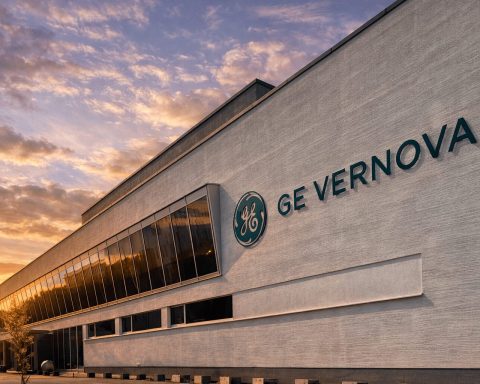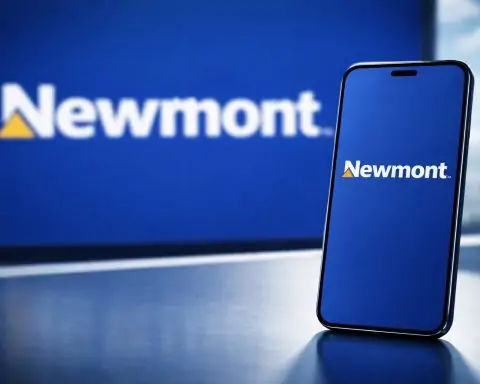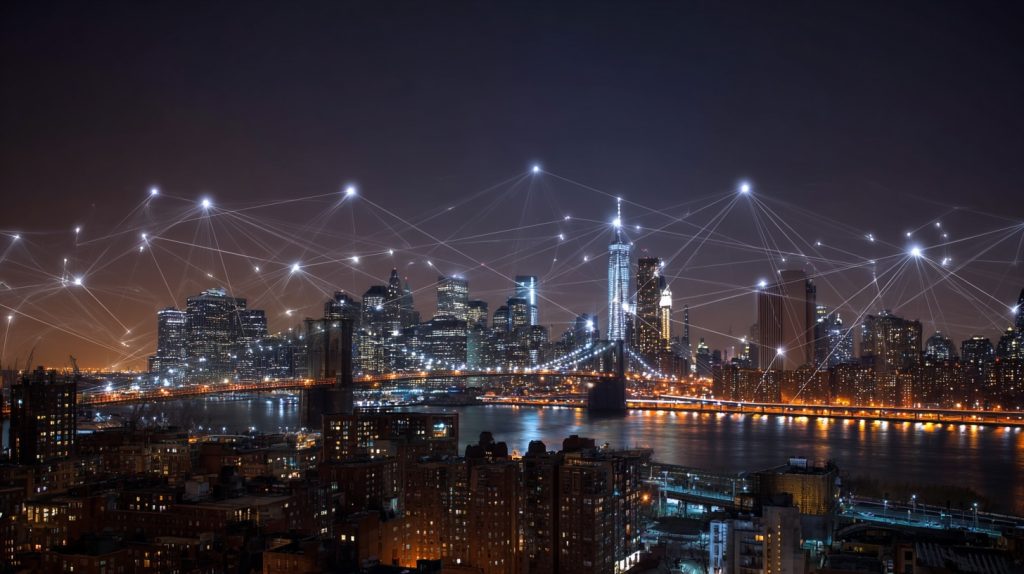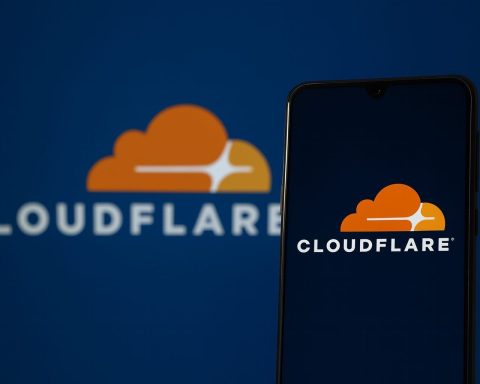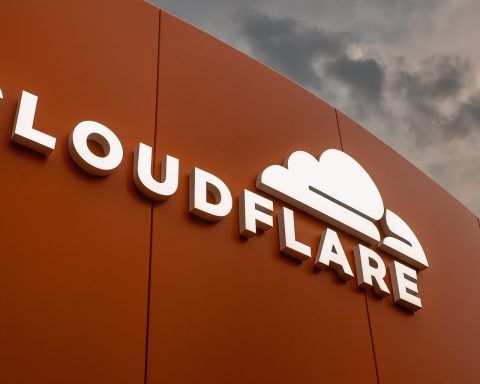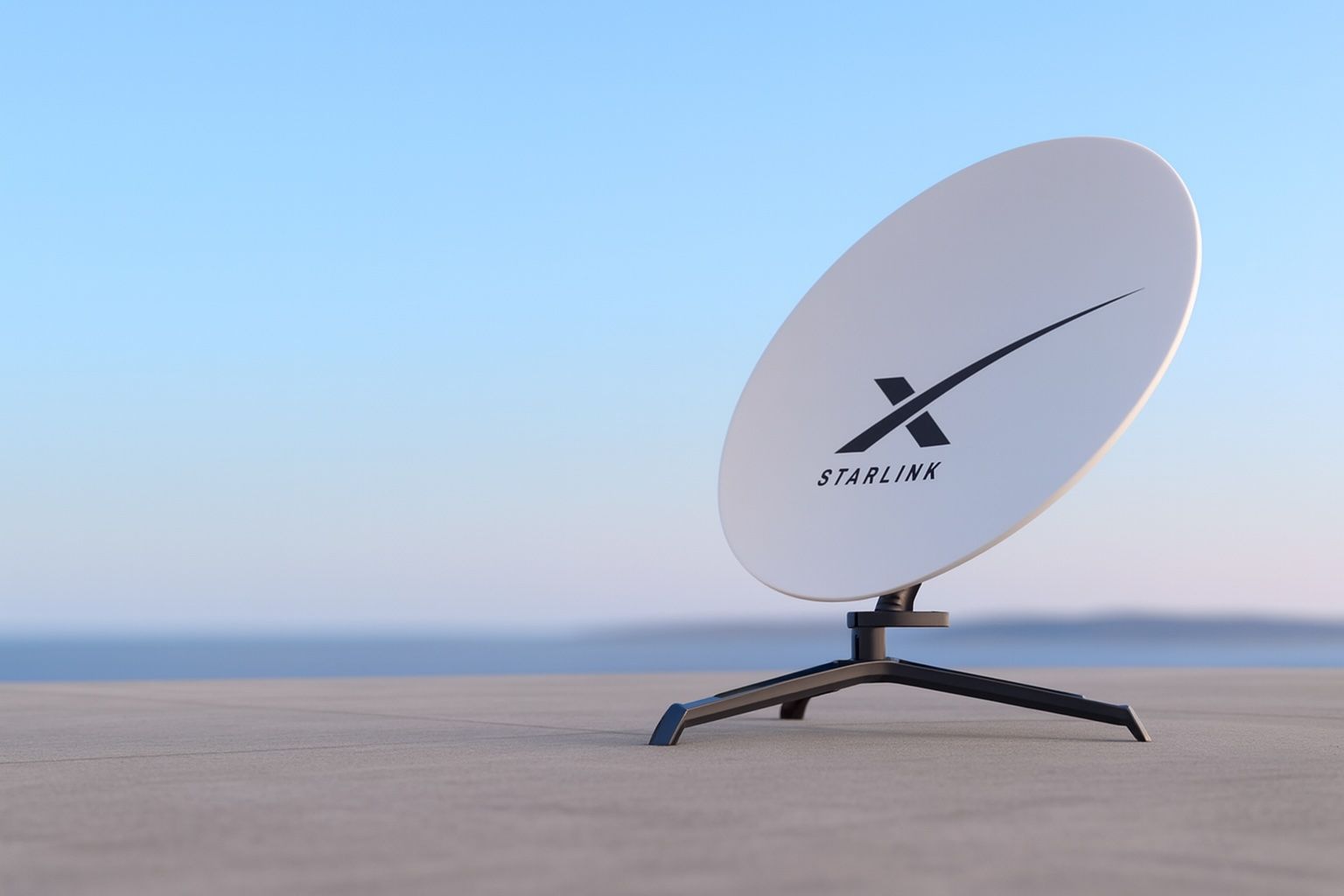- As of January 2024, CAR had 616,600 internet users, 10.6% internet penetration, and about 89% of the population remained offline.
- In 2024 there were 1.86 million active cellular mobile connections, equating to a 32.0% mobile penetration.
- About 56% of Central Africans live in rural areas, with only around 14% of households having electricity.
- The Central African Backbone fiber project delivered a ~900 km national backbone with 11 PoPs, completed in 2023, linking Bangui to Cameroon and the Republic of Congo, and it spawned a Digital Training Center in Bangui (opened 2023) and the Central African Digital Development Agency.
- Orange Centrafrique obtained the first 4G license in November 2024, Moov Africa Centrafrique renewed its 4G license in January 2025, while Telecel faced a government shutdown over CFA 2.7 billion in unpaid taxes in mid-2024.
- 4G rollout is expected to begin in Bangui with Orange in 2024–2025 and spread to other major towns, leveraging the new fiber backbone.
- Market shares place Orange Centrafrique at roughly 60% of mobile services, Telecel Centrafrique at about 30–40%, with Moov Africa Centrafrique as the third operator and Socatel as a minor player.
- Satellite internet remains crucial for hard-to-reach areas; Starlink was not officially available in CAR as of 2024, but neighboring DRC and Chad approved Starlink in 2024, with hardware around $600 and monthly service $50–$100.
- Bitcoin became legal tender in 2022, but observers noted that nine in ten Central Africans did not have internet access, illustrating the mismatch; internet penetration was around 11% in 2021 and electricity around 14%.
- International support under the CAB program included €34 million in EU and AfDB grants, completed in 2023, delivering ~900 km of fiber, 11 sites, a digital training center, and a Digital Development Agency, with plans for a PPP to manage the backbone.
Introduction and Current Internet Usage in CAR
The Central African Republic (CAR) remains one of the least connected nations on earth. As of early 2024, only about 616,600 Central Africans were internet users, roughly 10.6% of the population [1]. In other words, nearly 90% of the country’s ~5.8 million people are offline [2]. Most users access the internet via mobile networks, as fixed broadband infrastructure is extremely limited. There were about 1.86 million cellular mobile connections active in CAR in 2024 (some people own multiple SIM cards), equivalent to 32% of the population [3]. By contrast, less than half of Central Africans even have a mobile phone, and only about 14% have access to electricity [4] – stark indicators of the developmental challenges affecting internet uptake. The table below summarizes key indicators:
| Indicator (Jan 2024) | Value |
|---|---|
| Population | 5.83 million [5] |
| Internet users | 616,600 [6] |
| Internet penetration (% pop) | 10.6% [7] |
| Active mobile connections | 1.86 million [8] |
| Mobile penetration (% pop) | 32.0% [9] |
Most Central African internet users rely on mobile 2G/3G networks, as fixed-line and broadband services are minimal. Over 89% of the population remained offline in early 2024 [10].
Key Challenges Limiting Internet Access
Multiple factors have kept CAR’s internet penetration low (around 10%) and growth sluggish. Key challenges include:
- Poor Infrastructure: Until recently, CAR had very limited telecommunications infrastructure. The country was largely isolated from international fiber-optic networks, relying on expensive satellite or microwave links for connectivity. Only in late 2023 was CAR finally connected to undersea cables via a new 935-km fiber-optic backbone linking the capital Bangui to neighboring Cameroon and Republic of Congo [11]. Internal networks (cell towers, fixed lines) remain sparse outside Bangui, so vast rural areas still lack any internet or even basic telecom coverage [12].
- Political Instability and Conflict: Years of civil conflict and instability have damaged telecom infrastructure and deterred investment. The deployment of fiber and mobile networks was delayed by the 2012–2013 crisis and ongoing insecurity [13]. Even today, rebel-controlled or remote regions are risky for infrastructure rollout [14]. Telecom companies face challenges protecting equipment and maintaining service in conflict zones. Persistent instability has made CAR a less attractive market for the large investments needed to expand internet access.
- High Costs and Poverty: Internet access remains unaffordable for most citizens. Data is very expensive relative to incomes – in CAR, 1 GB of mobile data can cost up to 20% of an average monthly income [15], one of the worst affordability levels in the world. (By comparison, the African average is about 8.8% of monthly income per 1GB, already high by global standards [16].) With over 70% of Central Africans living in poverty, few can afford smartphones or monthly data plans. This stark cost barrier keeps usage low even where coverage exists.
- Geography and Electricity: CAR’s terrain of dense rainforests, savannas, and remote villages makes infrastructure deployment difficult and costly [17]. Around 56% of the population lives in rural areas [18] that often have no access roads, let alone internet. Additionally, only ~14% of households have electricity [19], and power outages are common. Lack of reliable electricity hinders telecom operations (e.g. powering cell towers) and makes it hard for users to charge phones or routers. The combination of challenging geography and minimal electrification severely limits connectivity outside a few urban centers.
- Regulatory and Economic Barriers: The business environment has posed challenges for telecom operators. Hefty taxes and regulatory hurdles can stunt growth – for example, in 2023 the government imposed new telecom taxes (a 7% tax on call revenues and 1% on mobile money transactions), which one operator, Telecel, refused to pay. This led authorities to shut down Telecel’s offices in mid-2024 over CFA 2.7 billion in unpaid taxes (~$4.4 million) [20]. Such disputes risk disrupting services for users and may discourage further private investment. More broadly, low consumer purchasing power and limited local tech expertise have made it hard for internet service businesses to thrive.
These factors – weak infrastructure, conflict, high cost, difficult terrain, and a fragile business climate – all contribute to CAR’s extremely low internet usage. The result is a nation where digital connectivity has lagged far behind global and even African norms. [21] [22]
Major Internet Service Providers and Infrastructure
Despite the challenges, CAR’s telecom sector has a few active operators providing mobile and internet services:
- Orange Centrafrique: A subsidiary of France’s Orange Group, it is the leading mobile operator in CAR with roughly 60% market share in mobile services [23]. Orange has operated in CAR since 2007 and offers 2G/3G mobile voice and data across major towns. In November 2024, Orange became the first provider to obtain a 4G license, calling it a “decisive step” to finally launch 4G and improve service quality nationwide [24]. The 4G rollout is part of CAR’s digital strategy to bridge the divide and boost economic and social sectors [25]. Orange also runs the dominant mobile money platform (over 90% of mobile money users) [26]. Historically, because fiber connections were absent, Orange relied on satellite links (such as SES’s medium-Earth-orbit satellites) for international bandwidth to serve its customers [27]. With the new fiber backbone now in place, Orange’s network capacity and speed should improve significantly.
- Telecel Centrafrique: Telecel is the second-largest operator (roughly 30–40% mobile market share) and has a presence in about 60 cities [28]. It offers 2G/3G mobile services and some fixed-wireless internet. Telecel has marketed itself as innovative – for instance, its CEO claimed Telecel was “the first operator to launch fibre optics in CAR,” offering some fiber connectivity in Bangui [29]. The company is part of the Telecel Group which operates in multiple African countries (Gabon, DRC, Chad, etc.) and recently expanded by acquiring former MTN operations [30]. However, Telecel’s operations in CAR hit a setback in 2024 when the government shut down its offices over tax disputes [31]. This raised concerns about service continuity [32]. Telecel’s future growth likely depends on resolving such issues and investing in new infrastructure (the company laid a foundation for a new high-tech headquarters in Bangui in 2024 [33], signaling a commitment to continue operating). Telecel is expected to pursue a 4G license as well, once its regulatory troubles are sorted.
- Moov Africa Centrafrique: Moov (part of Maroc Telecom’s Moov Africa brand) is the third mobile operator in CAR. It has a smaller share of the market but is expanding. In January 2025, Moov Africa Centrafrique renewed its license to include 4G, in line with the government’s push to modernize the sector [34]. The Minister of Digital Economy lauded the 4G license for Moov, stating that exploiting the new fiber-optic network combined with 4G “will revolutionize the electronic communications sector and improve the quality of the Internet connection in the Central African Republic,” while stimulating e-commerce and digital public services [35]. Moov’s rollout of 4G (following Orange’s) should further improve mobile broadband options for consumers. Until 4G becomes available, Moov continues to offer 2G/3G services primarily in Bangui and a few other areas.
- Socatel: Socatel is the state-owned incumbent telecom operator (Société Centrafricaine de Télécommunications). Historically, Socatel provided fixed-line telephone and was once the leading internet provider, but its infrastructure and customer base have deteriorated over years of conflict and mismanagement [36] [37]. Socatel’s dial-up and ADSL services (where available) reached only a small number of clients, and it also had a mobile arm that never gained much traction against the private competitors. With the new fiber backbone, the government plans to revitalize Socatel’s role: the fiber network will be run via a public-private partnership, selling wholesale capacity to operators including Orange, Telecel and Socatel [38]. This means Socatel could lease bandwidth and potentially offer broadband (or backhaul for mobile) using the national fiber. However, as of 2024 Socatel remains a minor player, and the bulk of internet access is via the mobile operators above.
Infrastructure: International connectivity has improved with the completion of the Central African Backbone (CAB)fiber project. By September 2023, CAR had its first national fiber-optic backbone: ~900 km of cable with 11 technical sites (PoPs) along the route, plus a Network Operations Center in Bangui [39]. This backbone links CAR to fiber networks in Cameroon and Congo, “ending the CAR’s digital isolation,” as the African Development Bank described it [40]. The fiber now provides high-capacity, low-latency internet transit that can be used by all local ISPs and mobile operators, replacing the slow satellite links. The government is in the process of partnering with a private operator to manage this backbone and ensure its capacity is marketed to telecom companies (so that Orange, Telecel, Moov, etc. can all buy bandwidth) [41]. The goal is to drastically reduce wholesale bandwidth costs and improve internet quality for end-users. In the mobile sector, 3G networks cover main cities, but coverage in rural CAR is very limited. The launch of 4G (beginning in Bangui) in 2024–2025 by Orange and Moov will mark the first time CAR has had any high-speed mobile broadband (LTE) – a step most African countries took years earlier. Expanding 4G beyond the capital will depend on how quickly operators invest and the security situation in provinces. Fixed broadband (fiber-to-the-home or DSL) is almost non-existent for residential consumers, though some businesses and NGOs in Bangui have dedicated VSAT or fiber links. The expectation is that with the new backbone and 4G, internet service will slowly become faster and more accessible, though reaching the majority of the population will still be a major challenge.
Satellite Internet Access: A New Frontier
Given CAR’s sparse infrastructure, satellite internet has long been a crucial (if costly) option to connect remote areas. Traditional satellite (VSAT) services are used by NGOs, government offices, and businesses outside of Bangui – for example, banks or humanitarian agencies often install VSAT terminals to get a stable connection where no fiber or mobile data exists. These conventional GEO-satellite links (from providers like Intelsat, SES, or GlobalTT) tend to be slow (high latency ~600ms) and very expensive, putting them out of reach for the general public. However, a new wave of Low-Earth Orbit (LEO) satellite internet is emerging in Africa, promising higher speeds and lower latency. In CAR, the developments in satellite internet include:
- Starlink (SpaceX): Starlink’s constellation of LEO satellites can deliver broadband (~50–150 Mbps) with latency ~20–50ms, even in rural and isolated areas. But as of 2024, Starlink is not yet officially available in the Central African Republic – the country is listed with a service date “unknown” on Starlink’s availability map [42]. Regulatory approval is a hurdle; many countries require licenses for Starlink to operate. Some of CAR’s neighbors have recently embraced Starlink: the Democratic Republic of Congo (DRC) reversed a ban and authorized Starlink in May 2024 after public demand [43], and Chad approved Starlink in November 2024 to help close connectivity gaps [44]. This regional momentum could put pressure on CAR to follow suit. Unofficially, Starlink units have already appeared in CAR’s frontier regions – media reports indicate that gold miners in remote areas along the South Sudan–CAR border obtained Starlink kits even before any authorization, illustrating both the demand and the challenges of regulating such technology [45]. If and when Starlink launches commercially in CAR, it could be transformative for remote communities, given the lack of other options. However, cost will be a barrier: in other African countries, Starlink’s hardware costs around $600 and the monthly subscription is $50–$100, a price only affordable to NGOs, businesses, or affluent individuals. Reliability could be affected by power and maintenance issues (Starlink needs electricity and a clear view of the sky), and there are also security concerns – authorities worry that unregulated use of Starlink might allow rebels or smugglers to communicate without oversight (the DRC’s initial ban was over such fears of misuse by armed groups) [46]. CAR’s government will likely weigh these factors when deciding on Starlink, but it is expected to eventually green-light the service as part of its digital expansion, possibly by 2025–2026, following the lead of neighbors.
- Other Satellite Providers (OneWeb, Viasat, etc.): Besides Starlink, other satellite ventures are eyeing Africa. OneWeb, another LEO satellite network, achieved global coverage in 2023 and has partnered with telecom operators to deliver connectivity in rural areas. In CAR, OneWeb is not directly active with consumers yet, but international service providers can technically beam OneWeb connectivity into the country. Some satellite telecom firms advertise new LEO services in CAR (for instance, offering OneWeb or Starlink-based links up to 200 Mbps) [47] for enterprise clients. Viasat (which now owns the former KA-SAT network in Africa) and YahClick (from Yahsat) provide broadband satellite in Central Africa through local resellers; these typically serve government agencies or companies that need reliable links. The SES/O3b medium-Earth orbit satellites have also been employed in CAR – Orange Centrafrique partnered with SES Networks to improve its backbone connectivity in recent years [48]. Those MEO satellites deliver fiber-like latency and were a stopgap until fiber arrived. Going forward, satellites will remain important to fill coverage gaps: they can connect villages, border posts, or schools that may wait years for terrestrial networks. The cost of satellite bandwidth, however, remains high. Even as LEO constellations drive prices down somewhat, the equipment and subscription fees are beyond reach for the average CAR household.
- Satellite Initiatives and Reliability: International initiatives often include satellite connectivity for emergency or remote education projects in CAR. For example, UN agencies and peacekeepers in CAR routinely deploy satellite links to connect their missions. Some development programs have provided satellite internet to community centers or clinics in conflict zones. Satellite internet’s reliability in CAR depends on factors like weather (tropical rains can disrupt certain frequencies) and the availability of technicians to maintain equipment. Still, satellites offer a lifeline where no other communication exists. As a local ICT expert summarized, “satellite internet isn’t as fast as fiber, but it’s widely available – that makes it a good fit for rural Africa” [49]. In the coming years, a hybrid approach is likely: using fiber and mobile networks in urban areas, and satellites to reach the most isolated corners of the country.
International Partnerships and Aid for Internet Infrastructure
Expanding internet access in CAR has heavily depended on international support and regional cooperation. The Central African Republic, being a low-income, fragile state, lacks the capital for massive telecom investments, so donors and development organizations have stepped in:
- Central African Backbone (CAB) Project: This is a multi-country fiber-optic network program supported by the World Bank, African Development Bank (AfDB), European Union, and others. In CAR, the CAB project was financed by grants totaling €34 million (about 22 billion CFA francs) from the EU and AfDB [50] [51]. Initiated in 2018, it aimed to connect CAR to neighboring countries and build national ICT capacity. Despite delays due to insecurity, the project was completed in 2023, delivering CAR’s first fiber backbone infrastructure. The fiber runs from Bangui to the Cameroon border (providing access to submarine cables via Cameroon) and to the Republic of Congo border, with a branch expected toward Chad [52] [53]. By ending CAR’s digital isolation, this backbone should significantly lower the cost of bandwidth and improve connection quality nationwide [54]. The project also had “soft” components: it established two digital community centers, created a strategic framework for developing the digital sector, and even built a digital training center in Bangui [55]. The new Digital Training Center, opened in 2023 with AfDB support, is equipped for online courses, tele-medicine, and other digital skills programs to train Central African youth [56]. Additionally, a Central African Digital Development Agency was created as part of the project to serve as the government’s arm for implementing digital strategy [57]. These efforts illustrate how international aid is not only laying cables but also investing in the human and institutional capacity for CAR’s digital future.
Officials visit a new digital training center in Bangui, built with support from the African Development Bank and EU as part of the national fiber backbone project [58] [59]. Such international partnerships are helping develop both infrastructure and digital skills in the Central African Republic.
- World Bank and Other Donors: The World Bank has been involved in CAR’s connectivity agenda through earlier phases of the CAB program and related initiatives. For example, after the fiber backbone completion, the World Bank is supporting projects to expand digital government services – one project is helping digitize the Finance Ministry’s services, leveraging the new connectivity [60]. The European Union is funding the rollout of a national digital ID system based on studies completed under the CAB project [61]. These projects aim to increase internet usage by integrating digital technology into governance and daily life. Other partners like the French Development Agency (AFD) have provided financing (e.g. the DRC received $500 million from AFD/World Bank to improve internet, which indirectly benefits the region) [62]. The International Telecommunication Union (ITU) and African Union also include CAR in continent-wide programs for digital inclusion, such as efforts to harmonize regional telecom regulations and share best practices for rural connectivity. UN agencies on the ground (UNDP, UNICEF, etc.) often incorporate connectivity components in their development programs – for instance, setting up internet access points in schools, or using satellite links for humanitarian coordination. Given CAR’s limited resources, international aid is truly the backbone of its internet infrastructure development, from funding fiber optic cables to training engineers and policymakers.
- Public-Private Partnerships: There is recognition that donor-funded infrastructure must be complemented by private sector involvement for long-term sustainability. The CAR government has indicated it will form a public-private partnership (PPP) to maintain and commercialize the new fiber backbone [63]. This likely means an international telecom operator or consortium will manage the fiber network, selling capacity to all local ISPs at regulated prices. Such a model has worked in other African countries to ensure open access to backbone facilities. The PPP approach, supported by the World Bank and AfDB, is meant to avoid a monopoly and encourage competition (so that the lower wholesale costs translate into cheaper internet for consumers). International firms (for example, Liquid Intelligent Technologies or other pan-African fiber operators) might be interested in partnering, though no specific deal has been announced yet.
Overall, foreign investment and aid have been critical in jump-starting CAR’s connectivity. Without the EU and AfDB grants, the fiber backbone would likely not exist. These partnerships are also tied to broader goals – improving regional integration (the CAB links many Central African countries), fostering economic development, and even enabling new initiatives like CAR’s short-lived experiment with cryptocurrency (which assumed better connectivity). As the AfDB noted, the fiber project “puts an end to the CAR’s digital isolation, nurturing the emergence of a truly digital economy in this country set in the heart of Africa.” [64] The onus is now on CAR’s government and partners to build on this foundation.
Government Policies and Regulation Impacting Internet Growth
The Central African Republic’s government in recent years has begun to prioritize digital development, but policy and regulatory challenges remain:
- National ICT Strategy: CAR’s authorities have articulated a vision for digital transformation. The Ministry of Digital Economy, Posts and Telecommunications (headed by Minister Justin Gourna-Zacko) has a strategy aimed at reducing the digital divide, improving access to telecom services for all, and boosting economic and social sectors via digital tech [65]. A highlight of this strategy is the introduction of 4G mobile technology – the government finally moved to license 4G in 2024, recognizing that mobile broadband is essential for modern connectivity. In the words of the Minister, the rollout of 4G combined with the new fiber backbone will “improve the quality of the Internet connection in [CAR] as well as the fluidity of communications… stimulate our economy by promoting the emergence of e-commerce, [and] accelerate the digitalization of our public services” [66]. The creation of the Central African Digital Development Agency (mentioned earlier) is another policy step to institutionalize the digital agenda. This agency will help implement sectoral plans, such as expanding e-government, digital literacy programs, and possibly a broadband plan to reach rural areas [67].
- Telecom Regulation and Licensing: CAR’s telecom regulator (often working closely with the Ministry) has been updating the regulatory framework. The issuance of 4G licenses to Orange and Moov in 2024–2025 indicates a more proactive stance in modernizing networks. Previously, CAR was behind its peers – many African countries had 4G as early as 2015–2018, while CAR was stuck on 3G due to conflict and regulatory inertia. Now the tide is turning. The government’s challenge will be to ensure all operators (including Telecel and Socatel) can also upgrade so that competition is maintained. Spectrum allocation for 4G and eventually 5G will need clear regulation. Another area is regulatory support for infrastructure sharing: CAR may encourage mobile operators to share tower infrastructure or fiber backhaul to reduce costs and expand coverage faster, a policy many African regulators are adopting. On a regional level, CAR is part of the Central African regulatory harmonization efforts under ECCAS, which may influence its telecom laws.
- Taxation and Financial Policy: As noted, the government’s fiscal policies have directly impacted telecom operators. The 2023 Finance Law introduced a 7% excise tax on telecom services (call revenues) and a 1% tax on mobile money transactions [68] [69]. The intention was to boost state revenues from the growing telecom sector, but these taxes also risk making services more expensive for consumers and discouraging investment. The clash with Telecel over the 7% tax (leading to a shutdown of Telecel’s offices) suggests that the tax burden and enforcement methods need careful balancing. Orange was also confronted by officials after it passed on the 1% mobile money tax to users via fee hikes [70]. High taxation on ICT services is a common issue in African countries, and in CAR it could slow internet adoption by keeping prices high (compounding the already high data costs discussed earlier). Moving forward, the government may need to reconsider or streamline these taxes if it wants to make internet access affordable. On the positive side, studies on the taxation model for the digital sector have been done under the CAB project [71], so there is data to inform better policy – potentially shifting from heavy consumer taxes to more sustainable models that encourage usage growth (for example, reducing excise on data could lead to higher usage and ultimately more tax revenue via volume).
- Internet Freedom and Censorship: Unlike some countries, the Central African Republic historically has not imposed significant internet censorship or shutdowns. There are “no government restrictions on access to the Internet or credible reports of monitoring… without judicial oversight,” according to reports in the 2010s [72]. CAR has been more focused on simply keeping the networks running than on controlling online content. Even during periods of political strife, CAR did not resort to nationwide internet shutdowns (possibly because internet penetration was so low to begin with). This relatively open environment is a plus for internet growth. However, as connectivity increases, the government may introduce new cybersecurity or content regulations (for example, to combat online hate speech amid ethnic tensions, or to address misuse of services by rebels). The concern about Starlink being used illicitly already indicates the government’s awareness of security dimensions of internet access [73]. It will be important for CAR to craft internet governance policies that protect rights while ensuring stability.
- Digital Currency Initiative: In 2022, CAR made international headlines by adopting Bitcoin as legal tenderalongside the CFA franc. This bold move was part of the government’s attempt to position CAR as a potential crypto hub (the so-called “Sango Project”). However, it baffled many observers given the low level of internet access in the country. “Nine out of ten Central Africans do not have access to the internet – a prerequisite for using Bitcoin,” noted the BBC at the time [74]. Indeed, the internet penetration was just ~11% (around 550,000 people) in 2021 [75], and only ~14% had electricity, making digital currency usage impractical for the vast majority. As expected, Bitcoin adoption in CAR has been negligible and the government paused aspects of the plan by late 2022 [76]. This episode, while peripheral to telecom infrastructure, underscores the government’s ambitions for leapfrogging into a digital economy, but also the reality that without basic internet connectivity, such initiatives cannot gain traction [77]. It likely prompted the government to double down on improving the underlying infrastructure (hence the focus on fiber, 4G, etc., in 2023–24).
In summary, government policy in CAR is at a turning point: after years of neglect due to conflict, there is now a concerted push to modernize the telecom sector (e.g. licensing 4G, building fiber, drafting digital strategies). The government is working with international partners on frameworks to expand access and has so far maintained an open internet environment. The main risks to progress are policy missteps like over-taxation, or instability that derails regulatory efforts. If managed well, however, the regulatory environment can foster competition (between Orange, Telecel, Moov, etc.), promote investment in coverage, and ensure that the benefits of donor-funded infrastructure are passed on to consumers in the form of better service and lower prices.
CAR vs. Neighbors: Regional Comparison
The Central African Republic’s internet access levels are among the lowest in Africa and the world. In the Central Africa region, only a few conflict-affected countries have similarly poor connectivity statistics. For perspective:
- Central African Republic: ~10.6% of the population uses the internet (2024) [78]. This is roughly one in ten people.
- Chad: ~13% internet penetration (2022) [79]. Chad, which faces its own challenges with poverty and instability, is only slightly better connected than CAR.
- South Sudan: ~12% internet penetration (2022) [80]. Another conflict-torn country, South Sudan, is in the same range as CAR for connectivity (around one in eight people online).
- Burundi: ~11.3% (2022) [81] – Burundi, a low-income country in East Africa, also has extremely low usage, comparable to CAR.
- Democratic Republic of Congo: ~27–30% (2023) [82] [83]. DRC’s percentage is higher than CAR’s, but still only about one-third of its population online. Notably, DRC has some of the lowest data costs in Africa, yet only ~30% of 105 million people are online, illustrating that infrastructure and conflict issues weigh heavily [84].
- Cameroon: ~43.9% (2024) [85]. Cameroon, a neighbor with a coastline and relative stability in the south, has a much higher penetration rate – about four times that of CAR – thanks to better infrastructure (multiple submarine cable connections) and a stronger economy.
- Republic of Congo (Congo-Brazzaville): ~57% (2022) – an upper estimate; Republic of Congo has a small population mainly in cities (Brazzaville, Pointe-Noire) and has benefited from oil wealth and early fiber connectivity, leading to over half its citizens online.
- African Averages: As a whole, Africa’s internet penetration was around 36% in 2023 [86]. Sub-Saharan Africa specifically is about 39% [87]. In Central Africa (the sub-region including CAR, Chad, DRC, etc.), the average is lowest – roughly 24% in 2022, due to these countries lagging behind [88]. CAR at ~10% is far below even this regional average. By comparison, the most connected African nations (such as Morocco, Kenya, South Africa) range from 60% to 90%+ internet penetration [89] [90]. In other words, CAR is at the bottom end of the global digital divide. Only a handful of countries (like Eritrea or Somalia, which have unique issues) have lower rates. Even among low-income nations, CAR’s metrics are extraordinarily low.
According to one analysis, “Countries like South Sudan, Burundi, and the Central African Republic have some of the lowest penetration rates [in the world], with figures as low as 12.1%, 11.3%, and 10.6% respectively.” [91]This underscores how CAR is an outlier in terms of digital access. The comparison also highlights an important point: many of CAR’s neighbors and peers are starting to improve (e.g., Chad approving Starlink, DRC expanding mobile internet by 40% in three years [92]), so CAR must not fall further behind. The presence of the new fiber backbone and regional initiatives like CAB should help CAR catch up somewhat, but it will likely take the rest of this decade for CAR to approach the current African average, assuming stability and sustained effort.
One positive takeaway is that mobile connectivity is growing across Africa, and CAR can benefit from technologies and investments trickling in due to regional projects. For example, as Cameroon and Congo improve their networks (Cameroon aiming for 61% penetration by 2025 [93]), CAR can leverage cross-border links to piggyback on those improvements. Likewise, if Starlink and other satellite services proliferate in neighboring countries, CAR’s population near the borders might get access even before domestic policy catches up (signal spillover or cross-border subscriptions). However, on most metrics – internet use, broadband speed, affordability – CAR will need extraordinary support to reach parity with even its modestly better-off neighbors.
Future Outlook: Toward a Connected CAR
Despite its current challenges, the trajectory for internet access in the Central African Republic in the coming years is cautiously optimistic. Several developments suggest that CAR’s digital isolation may gradually lessen:
- Operationalization of the Fiber Backbone: With the national fiber-optic backbone now in service, internet bandwidth in CAR should increase dramatically. As the fiber is extended to telecom operators and ISPs, we can expect international bandwidth costs to drop (satellite bandwidth that cost thousands of dollars per Mbps can be replaced by fiber capacity at a fraction of the cost). This should eventually translate into lower consumer prices or higher data allowances. The fiber connectivity will also improve reliability and latency – previously, a cut to the single satellite or microwave link could knock out the entire country’s internet. Now CAR has redundant paths via two countries. The government’s next step is to connect this backbone to other parts of the region (an additional €18 million is allocated to link CAR’s fiber into the broader Central African Backbone network) [94], potentially including a connection north to Chad. By securing multiple routes (Cameroon, Congo, Chad/Sudan), CAR’s internet will be more resilient. Over the next 2–3 years, as the backbone’s capacity is commercialized, even secondary cities in CAR might get fiber backhaul, enabling them to receive better mobile and broadband coverage.
- 4G Rollout and Mobile Expansion: The introduction of 4G LTE networks in 2024–2025 will significantly improve user experience for those with access. Orange is expected to launch 4G service first (likely starting in Bangui and expanding to other cities) [95]. Moov will follow with its 4G deployment after the 2025 license agreement [96]. Telecel will presumably also upgrade to 4G once it resolves its licensing issues (it already hinted at fiber and other innovations, so 4G is the logical step). By the late 2020s, we could see 4G available in all major towns and along key highways. Mobile internet usage will grow as 3G users migrate to 4G and new customers come online attracted by better speeds. The GlobalData telecom market report projects that CAR’s total telecom service revenue (voice, data, etc.) will grow at over 9–10% CAGR through 2027, fueled largely by the uptake of 3G/4G mobile data and new fixed broadband services, backed by the government’s fiber expansion efforts [97]. In practical terms, this means tens of thousands of new internet subscribers each year. For instance, between 2023 and 2024 alone, the number of internet users in CAR rose by 18,000 (a 3% increase) [98] – and this pace could accelerate as 4G arrives. By 2030, if stability holds, CAR might finally reach several million internet users, perhaps 25–30% of the population, which would be a transformative increase from today’s 10%. While 5G mobile technology is on the horizon in advanced African markets, it is not a near-term priority for CAR; the focus for the next 5+ years will be on maximizing 4G coverage and getting affordable smartphones into people’s hands.
- Satellite Internet Expansion: In the near future, satellite internet is likely to become officially available and more prevalent. Starlink’s timeline for CAR is uncertain, but given that Chad and DRC moved in 2024, it would not be surprising if CAR’s government engages with SpaceX by 2025 to authorize Starlink services. If Starlink launches, we may see pilot programs where international NGOs or the government deploy Starlink kits at schools, community centers, or hospitals in remote towns. This could rapidly provide connectivity in places that still won’t have fiber or 4G for years. Additionally, OneWeb and other satellite providers might partner with CAR’s telecom companies (for example, a mobile operator could use OneWeb backhaul to connect a rural cell tower). The cost of user terminals is expected to gradually decline, and innovative financing (perhaps subsidies from universal service funds or donor grants) could enable some community-level adoption. By improving internet availability in rural areas, satellite services could help bridge the urban-rural divide in CAR’s connectivity. Reliability of these services will be tested in CAR’s environment, but early adopters – mining companies, missionary networks, etc. – are already showing it can work. One caveat: regulatory frameworks for satellite internet need updating (to handle issues like licensing, spectrum, and security). The government will likely craft regulations to integrate satellite ISPs into the market, learning from other countries’ experiences (e.g., ensuring Starlink pays local licensing fees or taxes, and perhaps requiring a local point of presence if feasible).
- Continued International Support: The path to a more connected CAR will continue to rely on international investment and aid. Encouragingly, CAR is now on the radar for development banks and donors in the digital sector. The successful completion of the CAB fiber project sets a precedent that funds can be effectively used despite a difficult environment. We can expect follow-on projects: for example, the World Bank or AfDB may finance a “last-mile connectivity” project to extend broadband to schools and government offices throughout CAR (these institutions can then act as hubs for community Wi-Fi). There might also be regional projects for Central Africa focusing on digital skills training, tech startups, and e-government, which would include CAR. The presence of a trained cadre of local IT professionals (thanks to the new training center [99]) will be crucial to maintain networks and services. On the private side, if security improves, CAR could attract telecom tower companies or ISPs to invest. For instance, a company like Helios Towers (active in African markets) might consider building shared cell towers in CAR, or an ISP like Liquid Intelligent Tech might one day extend fiber into Bangui from neighboring countries. Peace and stability are key – with even partial peace, small-scale investments (like wireless ISPs in Bangui or fiber to large enterprises) will increase. The government’s stated goal of using ICT to stimulate the economy could draw in tech firms or donors interested in things like e-health, agricultural information systems, and other internet-based services to support CAR’s development.
- Risks and Unknowns: The future is not without uncertainties. A resurgence of conflict could damage new infrastructure or scare away investors. Economic woes or political shifts could lead to policies that inadvertently hamper growth (e.g. excessive regulation or monopolization of the backbone). Additionally, climate and environmental factors (floods, etc.) could affect infrastructure resilience. On the technology side, CAR must be cautious about cybersecurity and digital literacy as more people come online – ensuring that new users are educated about online safety, and that critical services are protected from cyber threats, will be important (especially since the country has limited IT security capacity so far). The government will also need to maintain a pro-competitive environment: the benefits of the fiber backbone will only reach consumers if there’s healthy competition among ISPs and mobile operators to drive prices down. This means avoiding favoritism or corruption in the PPP for the backbone and continuing to allow multiple operators (Orange, Telecel, Moov, etc.) to operate and invest.
In conclusion, the Central African Republic is at a digital crossroads. After years of being at the very bottom of global connectivity rankings, CAR is taking steps that could finally spark progress: a new fiber highway to the global internet, modern 4G mobile networks, and the prospect of satellites connecting the hardest-to-reach villages. International partners are actively engaged, and the government has begun to implement forward-looking policies to nurture the telecom sector. While CAR’s internet penetration (around 10%) is currently one-third of Africa’s average, the gap can start to close if these initiatives bear fruit. Over the next five to ten years, we can expect steady if slow improvement – perhaps moving from 1 in 10 people online to 3 or 4 in 10 by the end of the decade, which would mean millions more Central Africans gaining access to the digital world. Each additional percentage of the population online could have outsized impacts, given CAR’s small population and developmental needs – enabling education, commerce, telemedicine, and civic participation in ways previously impossible. The journey will not be easy, but the foundation for a more connected Central African Republic has now been laid. As one report optimistically put it, a “quiet digital revolution is beginning to take flight” in Central Africa [100], and for CAR the coming years will determine how far it can soar toward digital inclusion.
Sources
- DataReportal – Digital 2024: The Central African Republic (Jan 2024) – latest stats on internet users (616.6k users, 10.6% penetration) and mobile connections (1.86M, 32%) [101] [102].
- Capacity Media – “€33m Central African Republic backbone now in service” (Feb 2023) – details on the 935 km fiber backbone connecting CAR to Cameroon and Congo, funded by AfDB/EU [103] [104].
- African Development Bank – “Young people in CAR can now enter digital professions…” (AfDB news, Apr 2024) – describes completion of the Central African Backbone project: 900 km fiber, 11 sites, training center, digital agency creation [105] [106].
- Developing Telecoms – “Orange acquires first 4G licence in Central African Republic” (Nov 2024) – Orange Centrafrique’s 4G license announcement, internet/mobile stats and quotes on digital strategy [107] [108].
- African Wireless Communications – “Moov Africa Centrafrique renews Global Mobile License” (Jan 2025) – news of Moov’s 4G license, includes minister’s statement on fiber and 4G revolutionizing communications [109] [110].
- Techpoint Africa – “Telecel CAR offices closed over $4.4m tax debt” (July 2024) – reports on CAR government shutting Telecel for unpaid taxes (7% telecom tax), mentions Telecel’s market presence and competitors [111] [112].
- News Central – “Central Africa Steps Up Drive for Digital Inclusion” (2024) – regional perspective article; gives internet access rates for CAR (~11%), Chad (13%), DRC (30%) and notes Starlink approvals in DRC and Chad [113] [114].
- Africa Finance Today – “Elon Musk Struggles to Operate Internet Business in Africa” (beehiiv newsletter, 2023) – discusses internet affordability: on average Africans pay 8.8% of income for 1GB, and in CAR/Chad/DRC as high as 20% [115].
- Bloomberg – “Starlink Terminals Falling Into the Wrong Hands” (Mar 2024) – noted that Starlink kits were found with gold miners along South Sudan–CAR border, before official launch [116].
- Reuters – “Bitcoin adoption by CAR baffles cryptoverse” (Apr 2022) – provides context on CAR’s internet/electricity stats (11% internet, 14% electricity, <50% mobile connection) during Bitcoin law [117].
- African.Business – “Starlink’s aggressive push in Africa keeps telcos on alert” (Nov 2024) – mentions CAR, South Sudan, Burundi having lowest net penetration (10.6–12%) [118] and discusses telco concerns about Starlink.
- Wikipedia – Telecommunications in CAR (accessed 2025) – background info on ISPs (Orange, Telecel, Moov, Socatel) [119] and note on lack of internet censorship [120].
References
1. datareportal.com, 2. datareportal.com, 3. datareportal.com, 4. www.reuters.com, 5. datareportal.com, 6. datareportal.com, 7. datareportal.com, 8. datareportal.com, 9. datareportal.com, 10. datareportal.com, 11. www.capacitymedia.com, 12. newscentral.africa, 13. en.wikipedia.org, 14. newscentral.africa, 15. africafinancetoday.beehiiv.com, 16. africafinancetoday.beehiiv.com, 17. newscentral.africa, 18. datareportal.com, 19. www.reuters.com, 20. techpoint.africa, 21. newscentral.africa, 22. african.business, 23. wholesale.orange.com, 24. developingtelecoms.com, 25. developingtelecoms.com, 26. wholesale.orange.com, 27. developingtelecoms.com, 28. techpoint.africa, 29. techpoint.africa, 30. techpoint.africa, 31. techpoint.africa, 32. techpoint.africa, 33. techpoint.africa, 34. www.africanwirelesscomms.com, 35. www.africanwirelesscomms.com, 36. en.wikipedia.org, 37. en.wikipedia.org, 38. www.capacitymedia.com, 39. www.afdb.org, 40. www.afdb.org, 41. www.capacitymedia.com, 42. newscentral.africa, 43. newscentral.africa, 44. newscentral.africa, 45. www.bloomberg.com, 46. newscentral.africa, 47. www.globaltt.com, 48. developingtelecoms.com, 49. africafinancetoday.beehiiv.com, 50. www.capacitymedia.com, 51. www.afdb.org, 52. www.capacitymedia.com, 53. www.capacitymedia.com, 54. www.afdb.org, 55. www.afdb.org, 56. www.afdb.org, 57. www.afdb.org, 58. www.afdb.org, 59. www.afdb.org, 60. www.afdb.org, 61. www.afdb.org, 62. newscentral.africa, 63. www.capacitymedia.com, 64. www.afdb.org, 65. developingtelecoms.com, 66. www.africanwirelesscomms.com, 67. www.afdb.org, 68. techpoint.africa, 69. techpoint.africa, 70. techpoint.africa, 71. www.afdb.org, 72. en.wikipedia.org, 73. newscentral.africa, 74. www.bbc.com, 75. www.reuters.com, 76. african.business, 77. www.reuters.com, 78. datareportal.com, 79. newscentral.africa, 80. african.business, 81. african.business, 82. newscentral.africa, 83. datareportal.com, 84. newscentral.africa, 85. datareportal.com, 86. newscentral.africa, 87. africafinancetoday.beehiiv.com, 88. www.statista.com, 89. african.business, 90. datareportal.com, 91. african.business, 92. developingtelecoms.com, 93. www.statista.com, 94. www.capacitymedia.com, 95. developingtelecoms.com, 96. www.africanwirelesscomms.com, 97. techpoint.africa, 98. datareportal.com, 99. www.afdb.org, 100. newscentral.africa, 101. datareportal.com, 102. datareportal.com, 103. www.capacitymedia.com, 104. www.capacitymedia.com, 105. www.afdb.org, 106. www.afdb.org, 107. developingtelecoms.com, 108. developingtelecoms.com, 109. www.africanwirelesscomms.com, 110. www.africanwirelesscomms.com, 111. techpoint.africa, 112. techpoint.africa, 113. newscentral.africa, 114. newscentral.africa, 115. africafinancetoday.beehiiv.com, 116. www.bloomberg.com, 117. www.reuters.com, 118. african.business, 119. en.wikipedia.org, 120. en.wikipedia.org


